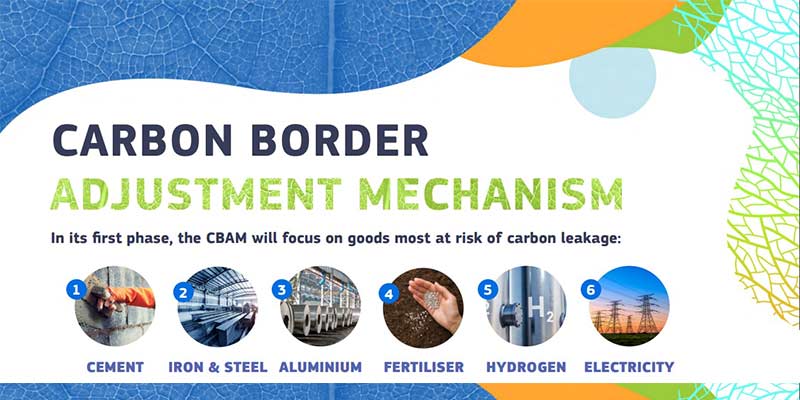- World
- May 25
What is EU’s Carbon Border Adjustment Mechanism?
• The Council of the European Union and European Parliament signed the regulation implementing the EU Carbon Border Adjustment Mechanism (CBAM).
• The regulation officially entered into force the day following its publication in the Official Journal of the EU on May 16.
• The CBAM itself will enter into application in its transitional phase on October 1, 2023, with the first reporting period for importers ending January 31, 2024.
Carbon Border Adjustment Mechanism
• The European Commission (EC) proposed the Carbon Border Adjustment Mechanism (CBAM) regulation in July 2021, which is one of the key elements of the European Union’s ‘Fit for 55’ package.
• The main objective of this environmental measure is to avoid “carbon leakage”.
• Carbon leakage occurs when companies based in the EU move carbon-intensive production abroad to countries where less stringent climate policies are in place than in the EU, or when EU products get replaced by more carbon-intensive imports. Carbon leakage refers to the increase in emissions resulting from the relocation of production.
• A carbon border adjustment tax is a duty on imports based on the amount of carbon emissions resulting from the production of the product
• CBAM targets imports of carbon-intensive products, in full compliance with international trade rules, to prevent offsetting the EU’s greenhouse gas emissions reduction efforts through imports of products manufactured in non-EU countries, where climate change policies are less ambitious than in the European Union.
• It will also prevent the relocation of the production or the import of carbon-intensive products.
• The CBAM will initially apply to imports of certain goods and selected precursors whose production is carbon intensive and at most significant risk of carbon leakage: cement, iron and steel, aluminium, fertilisers, electricity and hydrogen.
• These sectors have a high risk of carbon leakage and high carbon emissions. However, its scope could be extended to include indirect emissions and other goods and services.
• The additional charges on imports based on the emission intensity of production processes could affect the export competitiveness of several countries in the Asia-Pacific region, with consequences for development.
• Carbon Border Adjustment Mechanisms are already in place in some regions around the world, such as California, where an adjustment is applied to certain imports of electricity. A number of countries such as Canada and Japan are planning similar initiatives. In addition, the IMF and the OECD have recently carried out work to study how such measures could support international efforts to reduce greenhouse gas emissions.
How will CBAM work?
• EU importers will buy carbon certificates corresponding to the carbon price that would have been paid, had the goods been produced under the EU’s carbon pricing rules. Conversely, once a non-EU producer can show that they have already paid a price for the carbon used in the production of the imported goods in a third country, the corresponding cost can be fully deducted for the EU importer.
• The price of the certificates will be calculated depending on the weekly average auction price of EU’s Emissions Trading System (ETS) allowances expressed in euro/tonne of CO2 emitted.
• Importers of the goods will have to, either individually or through a representative, register with national authorities where they can also buy CBAM certificates.
• The gradual phasing in of CBAM over time will allow for a careful, predictable and proportionate transition for EU and non-EU businesses, as well as for public authorities.
• Once the permanent system enters into force on January 1, 2026, importers will need to declare each year the quantity of goods imported into the EU in the preceding year and their embedded GHG.
Manorama Yearbook app is now available on Google Play Store and iOS App Store

